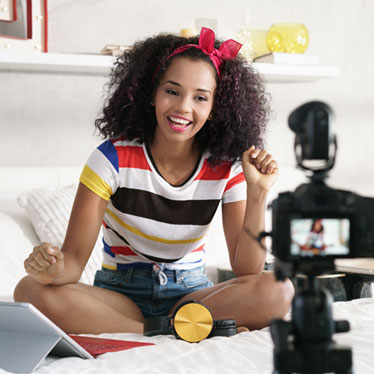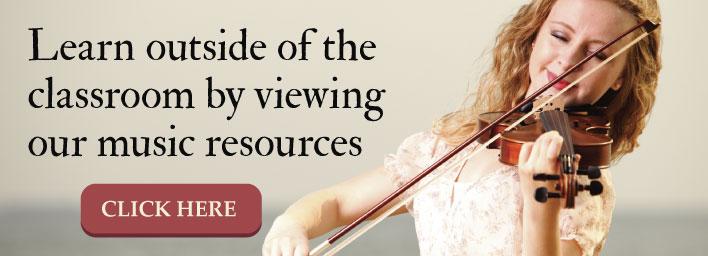10 Things You Need To Do To Build Your Performer Brand On Social Media

Any musician with a vision of becoming a working, professional performer has to know how to market themselves. Smart, effective marketing starts and rests on building an engaging, appealing brand. If you're unsure what "branding" is or want to learn about how some popular violinists manage their brand, read our post “What You Can Learn About Branding from Observing 3 Top Violinists“ first, then come back here.
Now that you are familiar with the two pillars of good branding, you know how important consistency is to developing and maintaining your brand. Consistency is also critical for using your brand to build your audience. You don't want to establish a brand just for the fun of it. You're building a brand to raise your profile as a performer, which will, in turn, lead to more prestigious (and lucrative) performing opportunities.
Social media is where most of your off-stage brand will live and the most effective channel for engaging with your audience. You must master how to use social media to grow your performer brand. Here are ten tips to get you started.
-
Focus on the right people.
High follower counts and the like are great, but it matters more who is following you on social media. Who is your audience? Why does your brand appeal to them? You can define your brand, but at the end of the day, your brand is how others perceive you. You need to know who you want to talk to, where to find them, what interests them (in addition to you) and how to connect with them. Putting your audience at the center of your social media branding keeps you focused. This doesn't undermine your authenticity as long as the brand you're trying to build is attracting people that reflect your true self.
-
Choose the right social media channels.
You can't be everywhere, at least not at first. Prioritize what two or three social media channels you want to focus on based on where your audience is. Do you need a YouTube channel? You're a performer – yes, you do. Do you need a Snapchat or Instagram presence? Maybe. Every social media channel publishes details about the demographics on its platform, so you can do some research to help you prioritize. Another "cheat sheet" option is to look where performers you admire are most active, especially those who appeal to the audience you'd like. When you're starting, it's better to rock two or three social media channels than be weak on a bunch. Once you establish a strong presence on a couple of channels, it's much easier to build your presence on other channels.
-
Use each channel for its strength.
While all your social media content should reflect the consistency of your brand, they shouldn't have all the same material. Play to the strengths and purpose of the individual channels. Instagram is highly visual, but also a highly personal, platform. You can post performance or publicity images there, but you can also share more personal images and stories. Build and share playlists on Spotify that don't focus on your music but share your musical tastes and inspiration.
-
Run press across all your channels.
After you share your Spotify playlist for music that motivates you to practice, don't just share it on Spotify. Use your other social media profiles to let people know your new list is out there. Take this multi-channel approach for shows, performances, significant updates – everything. Just take different angles with slightly different content for the same announcement/update on each channel, so people are inspired to engage with you wherever you are.
-
Get accessible.
People have come to expect a certain amount of direct interaction with people they follow online, especially if they're actively commenting. Don't leave people who interact with your online presence hanging. They won't like that. Also, don't wait to react. Be proactive about reaching out to others online, whether fellow artists or fans.
-
Leverage existing, valuable hashtags and memes.
Using hashtags and memes is a great way to get your content in front of people who don't know you. There are multiple tools you can use to do some research on hashtags most valuable for attracting your goal audience. Here's one and another one. Don't overlook smaller, yet more targeted hashtags. #Music is good. #CrazyforMozart may be better.
-
Cross promote/collaborate online.
An even better way to get yourself and your social media presence in front of a target-rich audience is to collaborate online with other artists or brands that appeal to your audience. Look for influencers that appeal to your market and engage with them. Say yes to collaborative requests if they're consistent with your brand. Does someone want to use your music in their video? Check them out and say yes if it makes sense. Someone wants to interview you on their podcast, say yes.
-
Make sure everything you post is authentic, but also consistent with your brand.
If you had to take your dog to the vet, is sharing a cute pic of your dog in a cone of shame consistent with your brand? Maybe, if your brand sensibility is highly personal, open, and direct. If your brand is for a more refined, remote, classical music persona – perhaps not. Don't undermine your brand by presenting confusing or contrasting realities.
-
Post regularly.
This is another aspect of consistent branding. Don't go a month without using social media without a specific reason. In which case, let your fans know you're taking a social media hiatus and when you'll be back.
-
Learn from what you're doing.
Like anything else, getting social media right will take practice. Once you master basic techniques, you'll want to move on to more advanced social media branding techniques. Also, keep in mind that what works today may not work tomorrow. Pay attention to what's working and not for you. Then, revise, refine, and repeat as warranted.
Social media isn't just about brand building online. Part of the goal is to use social media marketing to increase live audiences at your performances. Check out our next post on how to use social media to get people to attend your performances.


